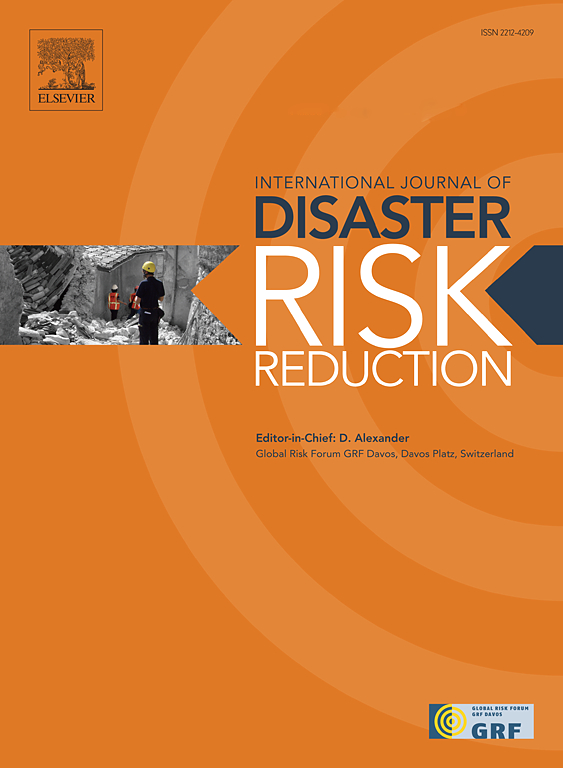Study on fine early warning of maize high wind lodging disaster risk in Jilin Province, China
IF 4.2
1区 地球科学
Q1 GEOSCIENCES, MULTIDISCIPLINARY
International journal of disaster risk reduction
Pub Date : 2025-02-15
DOI:10.1016/j.ijdrr.2025.105311
引用次数: 0
Abstract
Climate change has significantly disrupted human production and livelihoods. Frequent high wind-lodging disasters during the later stages of maize growth have reduced yields, threatening food security, agricultural systems, and sustainable development goals. This study introduces an innovative early risk warning system to guide agricultural resource allocation. It develops an early warning model for high wind-lodging disasters in maize that including natural, endogenous, and exogenous indicators. The model determines warning conditions, identifies early warning sources, analyzes warning signs, and predicts risk levels to support decision-making.
A comprehensive early warning model for maize high-wind-lodging disaster risk by integrating geographic, economic, and social indicators based on meteorological factors. The risk of maize lodging in Jilin Province from 1982 to 2021 was assessed. Spatial distribution analysis revealed an increasing regional risk warning level from maize joining to maturity, and the expansion of the area above the moderate warning level. The study showed that the early warning index was higher in the western region, with severe and extreme warning risks concentrated in Songyuan, Changchun, and Siping. The coupling coordination degree analysis of the early warning subsystems indicated high coordination in geoeconomic subsystems, with Changchun showing the potential for early coordinated subsystem development. We also revealed Changes in risk levels across different fertility stages in high-risk stages were also identified, offering direction for adjustment. This study provides valuable insights and data support for daily pre-disaster risk management, and demonstrates the model's adaptability to other maize-growing regions after adjusting indicators and parameters.

求助全文
约1分钟内获得全文
求助全文
来源期刊

International journal of disaster risk reduction
GEOSCIENCES, MULTIDISCIPLINARYMETEOROLOGY-METEOROLOGY & ATMOSPHERIC SCIENCES
CiteScore
8.70
自引率
18.00%
发文量
688
审稿时长
79 days
期刊介绍:
The International Journal of Disaster Risk Reduction (IJDRR) is the journal for researchers, policymakers and practitioners across diverse disciplines: earth sciences and their implications; environmental sciences; engineering; urban studies; geography; and the social sciences. IJDRR publishes fundamental and applied research, critical reviews, policy papers and case studies with a particular focus on multi-disciplinary research that aims to reduce the impact of natural, technological, social and intentional disasters. IJDRR stimulates exchange of ideas and knowledge transfer on disaster research, mitigation, adaptation, prevention and risk reduction at all geographical scales: local, national and international.
Key topics:-
-multifaceted disaster and cascading disasters
-the development of disaster risk reduction strategies and techniques
-discussion and development of effective warning and educational systems for risk management at all levels
-disasters associated with climate change
-vulnerability analysis and vulnerability trends
-emerging risks
-resilience against disasters.
The journal particularly encourages papers that approach risk from a multi-disciplinary perspective.
 求助内容:
求助内容: 应助结果提醒方式:
应助结果提醒方式:


